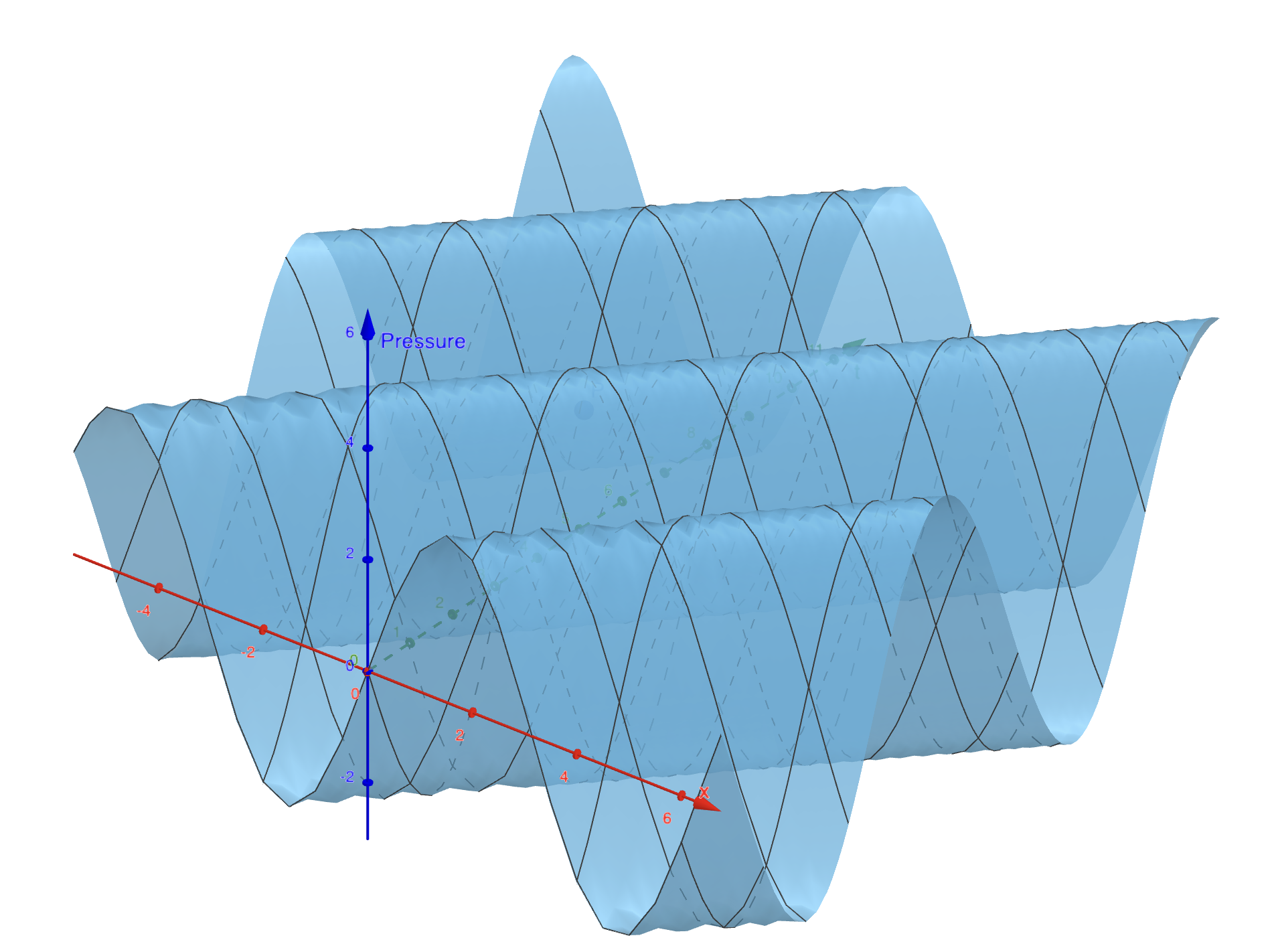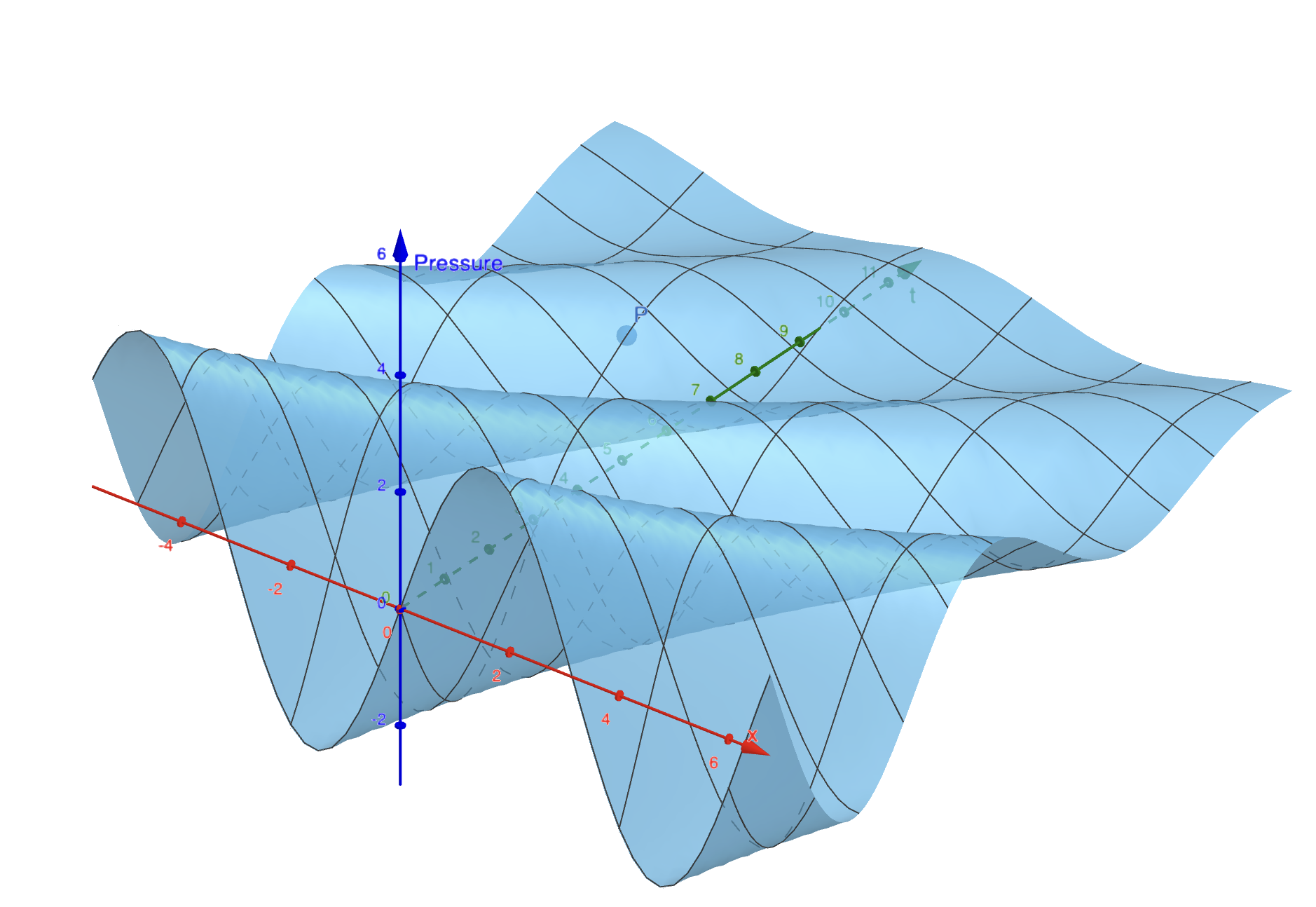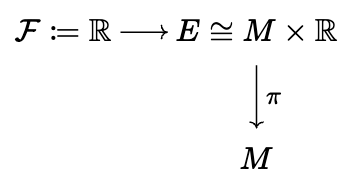Dissipation Currents
A generalized way to convariantly express dissipative systems.
Motivation
Dealing with dissipative systems is hard, as usually langrians are not covariant which results in needing to add lagrange multipliers using some fictitious generalized forces. However, this can also fail because there is no reason for the lagrange multiplier terms to be covariant. We need a different approach.
In thermodynamics, one treats an open system by including its surroundings. However, this implies that we need some understanding of the surrounding system in order to proceed. This can grow very quickly to an unmanageably complex description. Therefore we need a way to simplify the description.

However, for sufficiently simple systems one can simply introduce a mirror system that instead of loosing energy it gains energy. This is similar to the original system as if it was evolving backwards in time (hence the term mirror). An example of this is a wave in a dissipative medium, generating another (virtual) wave with the energy lost. Here we will use mirror systems to provide a more general description of Dissipative systems.
Dissipation Current Intuition
Consider a wave in 1 spatial dimension. We can represent it using a smooth function over

In a normal case of dissipation we have the same wave, only it is simply damped towards the time direction, as its decreases with increasing time. We could think of this as having to squeeze the wave between an envelope. Yet calculating the envelope is dificult for most applications.

Instead we can think of the dissipative component using vector fields. As you can see the magnitude of the gradient of the pressure decreases as we move further in time. Therefore, we can think of every point as a sink for the gradient, where more gradient enters than it comes out. How much? This is proportional to the component of the gradient at the time direction. In other words we can think of a current flowing all over the space, we will call that the dissipation current, and force our gradient to be sinked parallel to it. In this case the dissipation current is pointing towards the time direction at every point with the same magnitude.
Mathematical Formulation
Here we rigorously formalize the intuition of the previous section using differential geometry. We will also show how it arizes from the formalism.
Consider an

Here it is a trivial vector bundle over the spacetime manfold
Dissipation Currents
Definition: A dissipation current
Using the current we can now create our lagrangian. Consider scalar field theory where the field of interest is
Definition: Given a
Notice that the dissipation form is very similar to taking the exterior derivative
Proposition: The dissipative product has the following properties:
- Antisymmetric:
- linear (by the linearity of the differential and wedge product)
Come on I am not going to write a proof for this….
Proposition: Let
Proof: The proof is done by simple calculation
This is incospicuous until we set
Therefore we would obtain
Which is perfection! We saw how the dissipation form gives rize to the exponential envelope. Clearly current
Example: A simple example is when
Then the damping envelope wil be given by
Therefore the field

The blue curve is
A Covariant Lagrangian
We are finally at a position to introduce the Lagrangian. Consider two scalar fields
This is it! We have a covariant lagrangian for the two fields. And now, ladies and gentlemen the derivation of he field equations. Hold on to your butts this is going to be good!
Consider the action
Now to obtain the “extremum” we have to define the following function
We say that
We will solve the first one and then the other is done in a similar way. We therefore get
This integral must vanish
In the last line we used the fact that
We therefore, get
We have successfully derived the field equations! In particular here they are
In vector notation they read
So we have gotten the wave equatiuon loosing energy in the direction of the dissipation current. Here is a picture of this

The field of interest is loosing energy in the direction of the dissipation current, whereas the mirror field is gaining energy in the direction of the current.